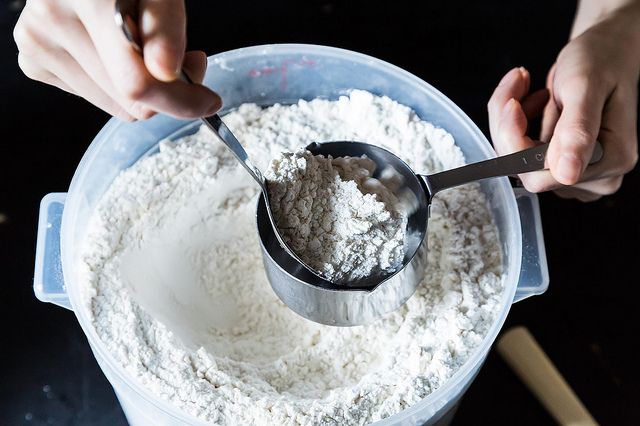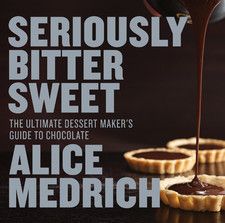Popular on Food52
Continue After Advertisement
17 Comments
Max
May 30, 2014
Thanks for the information. My biggest problem, not having scales is that cup and tablespoon measurements vary which I never realised till I moved to a different country. Moving from Australia to N.Z., no problem but then to the U.K. and on to Sweden. I bake wherever I go and have, over time, managed to work out the different measurements, with very few failures (lucky me)! I also use many US recipes which also need to be converted. I love baking and my family and friends like to eat so win, win. I do plan to buy scales when I settle down but don't see the point yet as I leave everything behind when I move on.
Debwoudhuysen
May 5, 2014
No such implication. I am a long term admirer of the US and of American cooking and loved my time living and cooking in the US. That's why I follow so many US stes from the UK.
SuperWittySmitty
May 5, 2014
Until a few years ago, owning a digital scale seemed like a luxury, and not really necessary. Amazing how things have changed- they're inexpensive and very convenient to own. I use mine for portion control after the cooking is done, too.
Manhattan T.
March 21, 2014
I'm always a "spoon and level" kinda girl but recently tested the different weights, based on approach. You're right: holy cow, but there's a difference. I now spoon & level then mark on every recipe the weight so the next time I make that recipe I don't have to dirty as many dishes...
Alice M.
March 21, 2014
Love it! This is exactly how one can slowly convert from volume to weights, even when the recipe doesn't include weights. Put down the weight of your volume measures, especially for your tried and true recipes. Once you have a weight for each ingredient (or even just the critical ones) you can tweak them as time passes...mark your changes etc. This is the way recipes get perfected and improved over time.
Chris C.
October 19, 2013
It would be nice if Food52 would at least start including weights in their recipes as well as volumes. I don't really understand the logic behind "we move slowly here."
fionula
April 28, 2014
I am definitely in this camp. And I too started the conversion by finding out what 'my' cup of flour weighs. Also very glad to see Alice Medrich as a contributor.
Jewels V.
June 29, 2014
Just because something is a good idea, that doesn't mean everybody should convert. For instance, artists do not fare well with metric measurements; it changes their perceptions of ratios. Nobody understands why, but the differences are there. People use whatever measures they find convenient. Bead necklaces are sold all over the world with diameter specified in mm and length specified in inches. Nobody even blinks at a listing like "8 mm x 18 in". Another problem is that a lot of people never owned a scale and don't intend to buy one. They will eat hamburger and mixed veggies every day rather than knuckle under to some new fad. From my own experience, the changeover is annoying. I bought a scale several years ago but it is just today that I found out what a cup of flour is supposed to weigh, and it is still not certain.
Jennifer P.
October 14, 2013
Alice - I have been a fan of yours since Cocolat in Berkley!! So glad to see you will be a regular contributor.
Alice M.
October 14, 2013
I completely agree. Weighing is the best and metric is best of all. But we move slowly here. My upcoming books are all metric as well as cups and spoons! Thanks for your comment.
AntoniaJames
October 14, 2013
I started using a scale for breadmaking quite some time ago. I use my own wild yeast levain, and the author of the book I used to capture and develop my starter (William Alexander, "52 Loaves") provides recipes only in weight, so it sort of became a habit. It's so much easier than volume measuring.
Now, my question for you: I almost always convert volume-based recipes by using the nutrition information from the side of the bags/boxes/jars of ingredients, which in the U.S. always include grams as well as well as volume, except certain liquids, which provide metric volumes. (It's particularly helpful for messy ingredients, such as peanut butter! One really appreciates the advantages of not having to wash a measuring cup and spatula covered with peanut butter.) I realize that the correlation between how a recipe was actually measured in volume when tested by the author, and the weight/volume ratios stated by the manufacturer, may not always be accurate. In general though, I've found this method to work just fine for pie crusts, quick breads, cookies, brownies and yeast breads. Do you think this practice is too risky for cakes and the like? It worked for -- and in fact, improved -- my mother's old-school sour cream pound cake. I'm wondering, however, about other more delicate cakes, where not getting it "right" might make more of a difference. What do you think? As always, thank you so much. ;o)
Now, my question for you: I almost always convert volume-based recipes by using the nutrition information from the side of the bags/boxes/jars of ingredients, which in the U.S. always include grams as well as well as volume, except certain liquids, which provide metric volumes. (It's particularly helpful for messy ingredients, such as peanut butter! One really appreciates the advantages of not having to wash a measuring cup and spatula covered with peanut butter.) I realize that the correlation between how a recipe was actually measured in volume when tested by the author, and the weight/volume ratios stated by the manufacturer, may not always be accurate. In general though, I've found this method to work just fine for pie crusts, quick breads, cookies, brownies and yeast breads. Do you think this practice is too risky for cakes and the like? It worked for -- and in fact, improved -- my mother's old-school sour cream pound cake. I'm wondering, however, about other more delicate cakes, where not getting it "right" might make more of a difference. What do you think? As always, thank you so much. ;o)
Debwoudhuysen
October 15, 2013
Should also have said I love your books, especially Chewy, Gooey etc. Your lemon thin biscuits (as we call cookies) have become a much admired staple.
Debwoudhuysen
October 14, 2013
I know this is a very European point (as a UK admirer and user of this site) but I really don't understand why you don't just weigh things - then you can be as accurate as possible.
hardlikearmour
October 14, 2013
Probably for the same reason we don't switch to the metric system ;-)
Debwoudhuysen
October 15, 2013
Not sure I follow this - you can weigh in pounds and ounces too (as I often do being old enough to have learned to cook in imperial).
SuperWittySmitty
May 5, 2014
The implication being that Americans are so behinds when it comes to weighing and measuring, as evidenced by our insistence on retaining this old-fashioned system. I use both in my kitchen- my Grandma from germany didn't know from grams or ounces- she used measuring cups and teaspoons, and she didn't talk down like a snob to those who did things in another way.




See what other Food52 readers are saying.